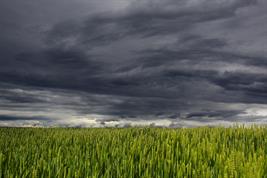12.04.2023

France experienced in 2016 the most extreme decline in wheat yields in recent history: In some districts, yields fell by 55 percent. To determine the causes, scientists combined the largest contiguous, detailed dataset of wheat field trials with statistical methods and crop models, climate information and yield physiology. The results show that the yield losses were caused by a confluence of different climate effects. The authors of the study believe that such effects could occur more often in the future than they have in the past, and that the frequency of extremely low wheat yields will increase. Prof. Frank Ewert, ZALF's scientific director, and ZALF scientist Prof. Heidi Webber were involved in the study.
In France, the 2016 wheat crop consisted of up to 40 percent fewer grains, which were also much lighter than expected. These data were collected at eight research stations in France. The flowering stage was affected by persistent cloud cover and heavy rainfall. Nearly one-third of yield losses were caused by reduced sunlight and 19 percent by floral damage. Grain filling was also affected, for example, by a lack of oxygen in the soil (known as soil anoxia), fungal leaf diseases and ear blight. About a quarter of the yield losses can be attributed to this.
The extreme yield losses were caused by a combination of several climatic effects. The researchers predict that future climate changes will increase the likelihood that these interacting factors will occur again and increase the frequency of extremely low wheat yields.
Further information:
